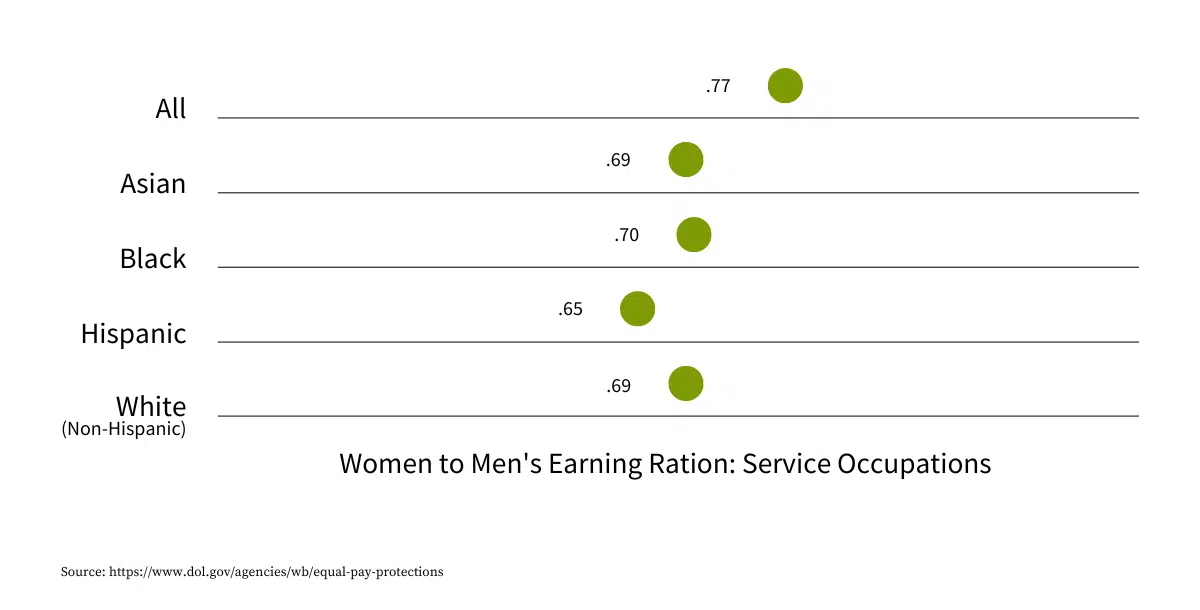Building Pay Equity Into Your Culture

Building Pay Equity Into Your Culture
As the war for talent continues to wage on (no pun intended), HR and business leaders need to prepare for a future where pay equity and transparency are expectations, not aspirations. The definition of pay transparency is when the employer discloses information about employee compensation standards to others – internally, externally, or both. A key benefit of pay transparency is that it forces organizations to develop a thought-out and data-driven approach to fair and equitable compensation based on objective work-related criteria, not discriminatory and bias-generated factors.
We can all agree that not everyone should be paid the same- pay equity is about fairness, and fairness considers the differences between employees, such as years of experience, education, special skills, and location. However, the fact is that women are still underpaid compared to men. According to the United States Census Bureau, in 2020, women earned 83 cents for every dollar earned by men. And what’s worse is that gap widens for women of color.

However, attention has been paid to pay equity across the country; various states and localities are implementing laws that seek to address the informational imbalances surrounding pay that can perpetuate existing disparities. These laws include bans on employers asking job candidates about their previous salaries and requirements for employers to disclose salary ranges to candidates.
For example, a recent bill in Michigan proposes that the employer provide wage information for similarly situated employees covering up to three years. “Similarly situated employees” are “those within the same job classification as the employee requesting the information or whose duties are comparable in skill, effort, responsibility, working conditions, and training to those of the requesting employee.” HB 4406 also would prohibit as a condition of employment that the employee sign any waiver or other document that restricts or denies an employee the right to disclose their wages or prohibits discharge, discipline, or any discrimination against those who disclose such information.
If an organization hasn’t yet taken the approach to create a philosophy that aligns with the company’s values and is backed by relevant, up-to-date market data, the time is now. Companies with thoughtful compensation plans and strategies are in a much better place to incorporate transparent practices into their business. But even then, how pay transparency practices are rolled out is essential. Communication is vital to any successful change or initiative, and employees will have questions about their personal data. Employers and managers must be prepared to provide clear explanations.
HR can play an essential role in helping managers discuss pay transparency with their employees.
- Establish clear pay policies: HR can work with senior leadership to establish clear policies and guidelines for pay transparency, including what information can be shared with employees and how to ensure confidentiality is maintained.
- Use data and analytics: HR can leverage data and analytics to evaluate market pay competitiveness and identify potential pay disparities. HR will recommend adjustments to compensation policies and practices.
- Develop compensation communication strategies: HR can develop communication strategies and training for managers when discussing pay with employees. These strategies can help managers explain the rationale behind compensation decisions and provide guidance on how to handle difficult conversations or employee pushback.
- Facilitate employee feedback: HR can create a feedback mechanism for employees to provide input on pay practices and policies and communicate this feedback to managers to help them better understand employee perspectives.
Ready to Improve Your Organization’s Pay Equity?
Our community of Fractional HR experts is eager and willing to help determine the proper structure for your organization.
Let’s start today by booking a free, zero-commitment strategy conversation with one of our People Strategists.
Share This Article
Related Links
